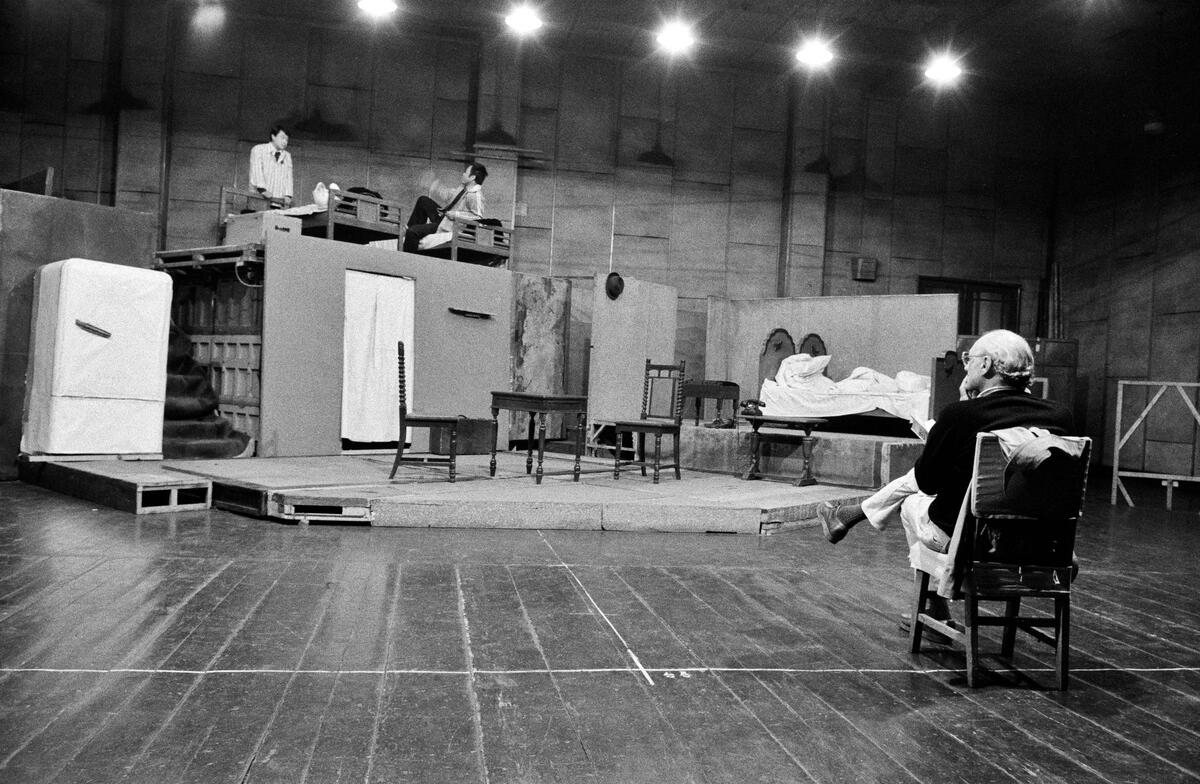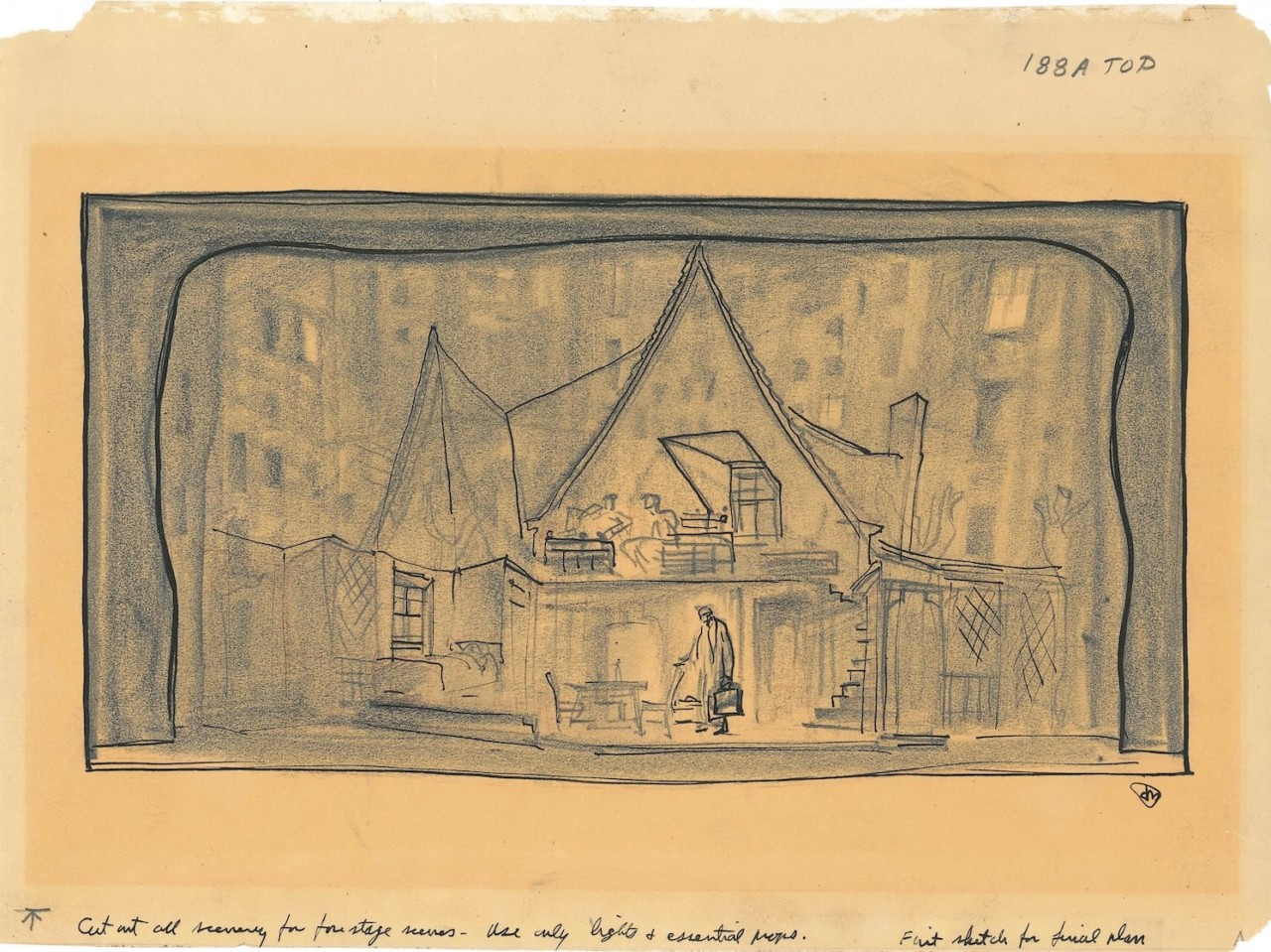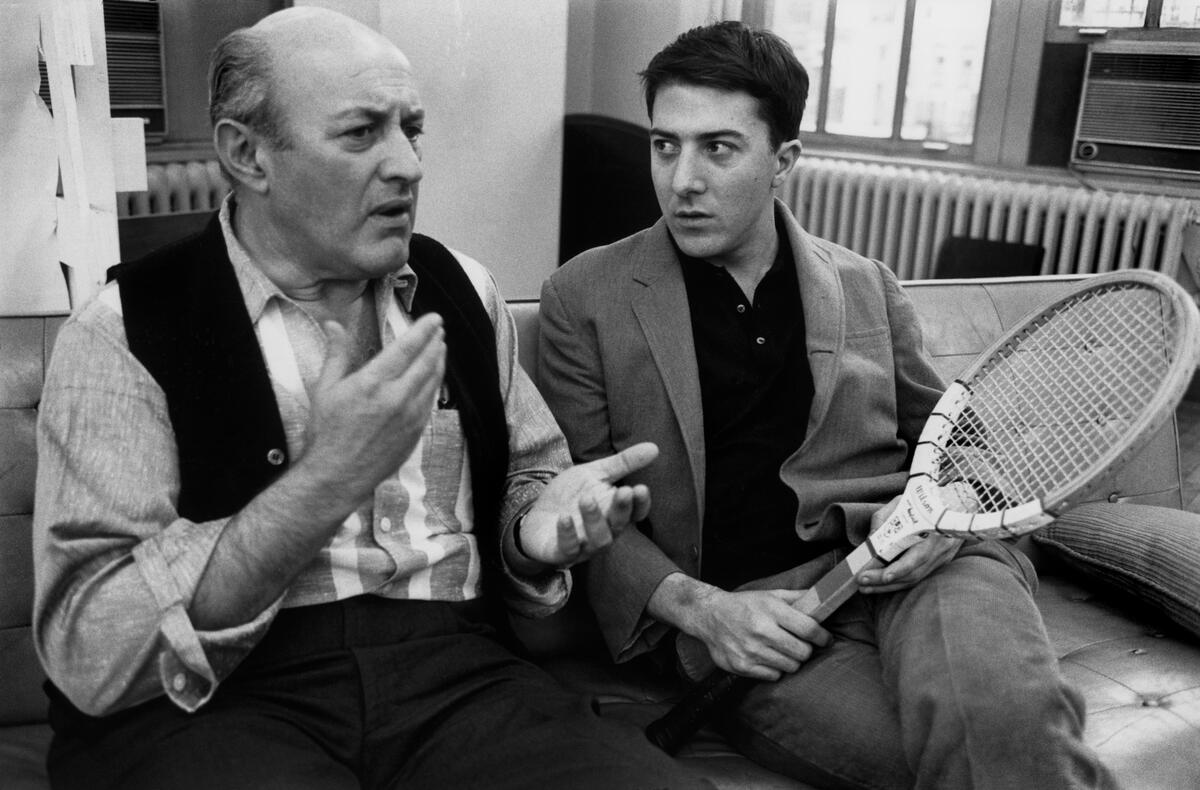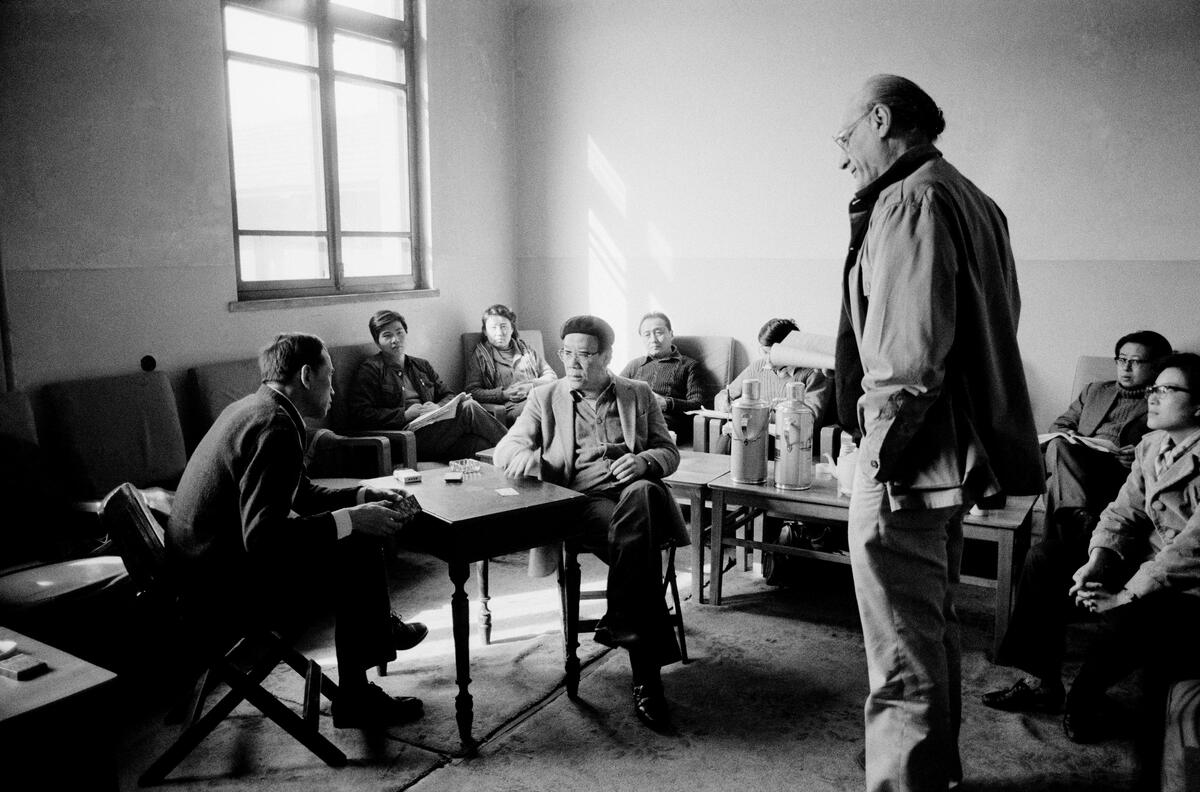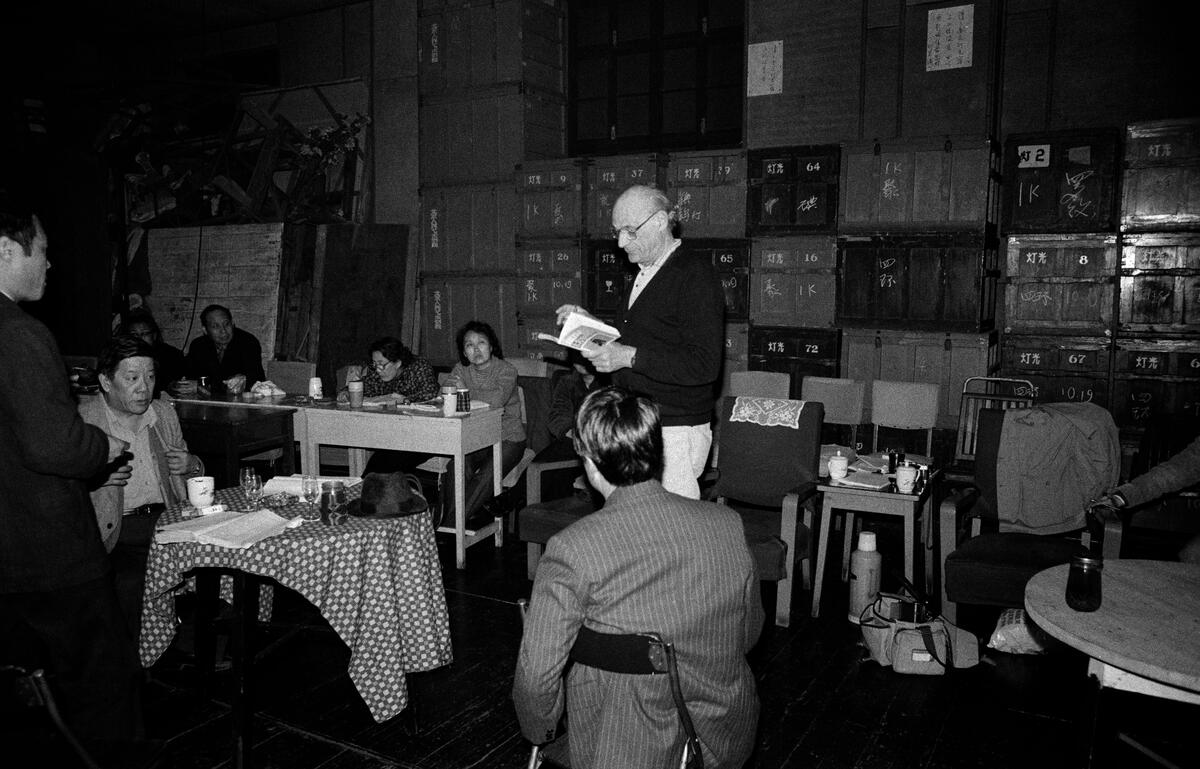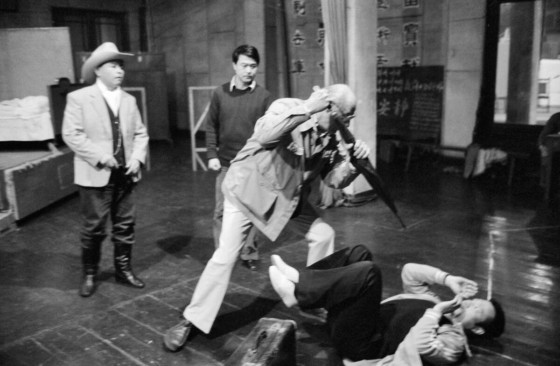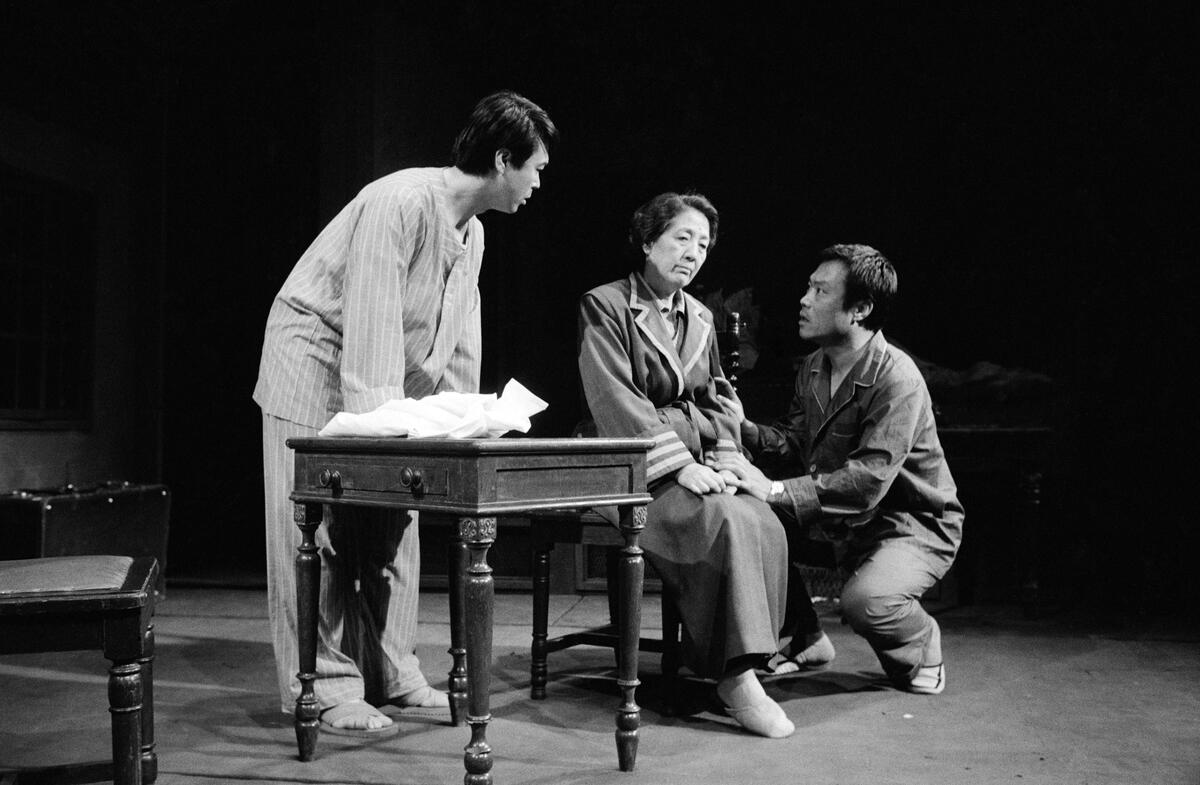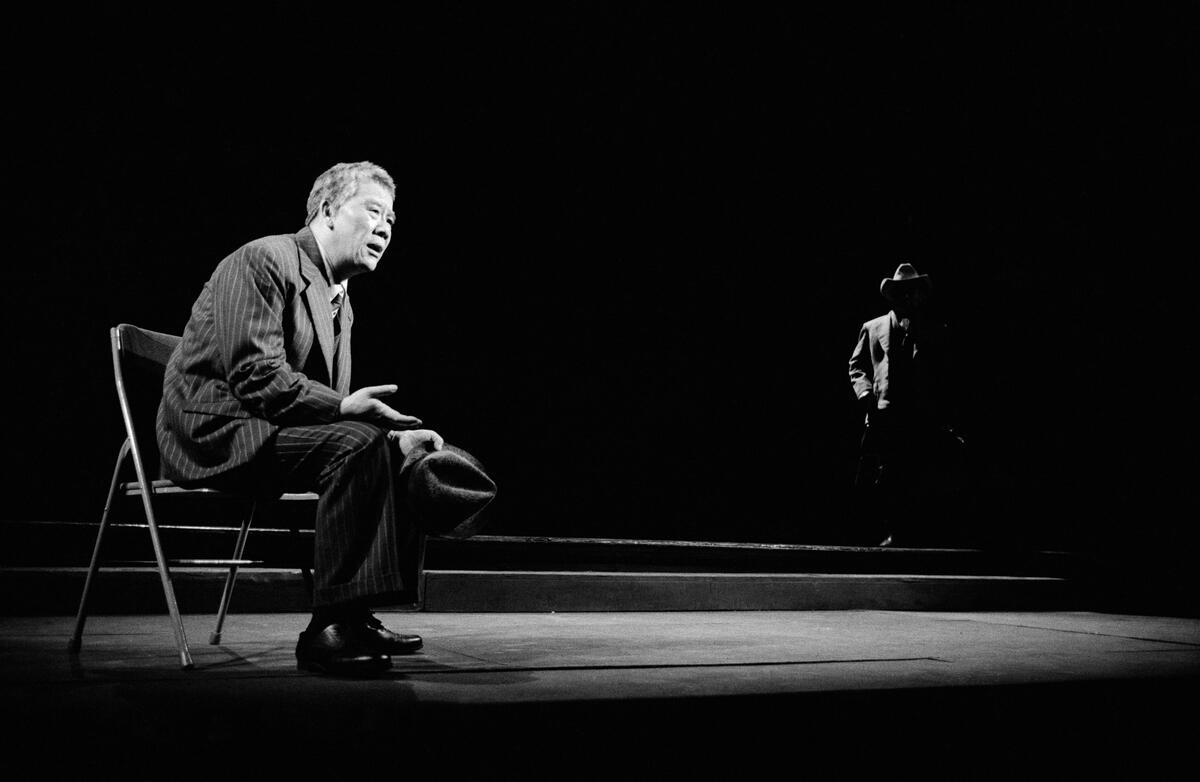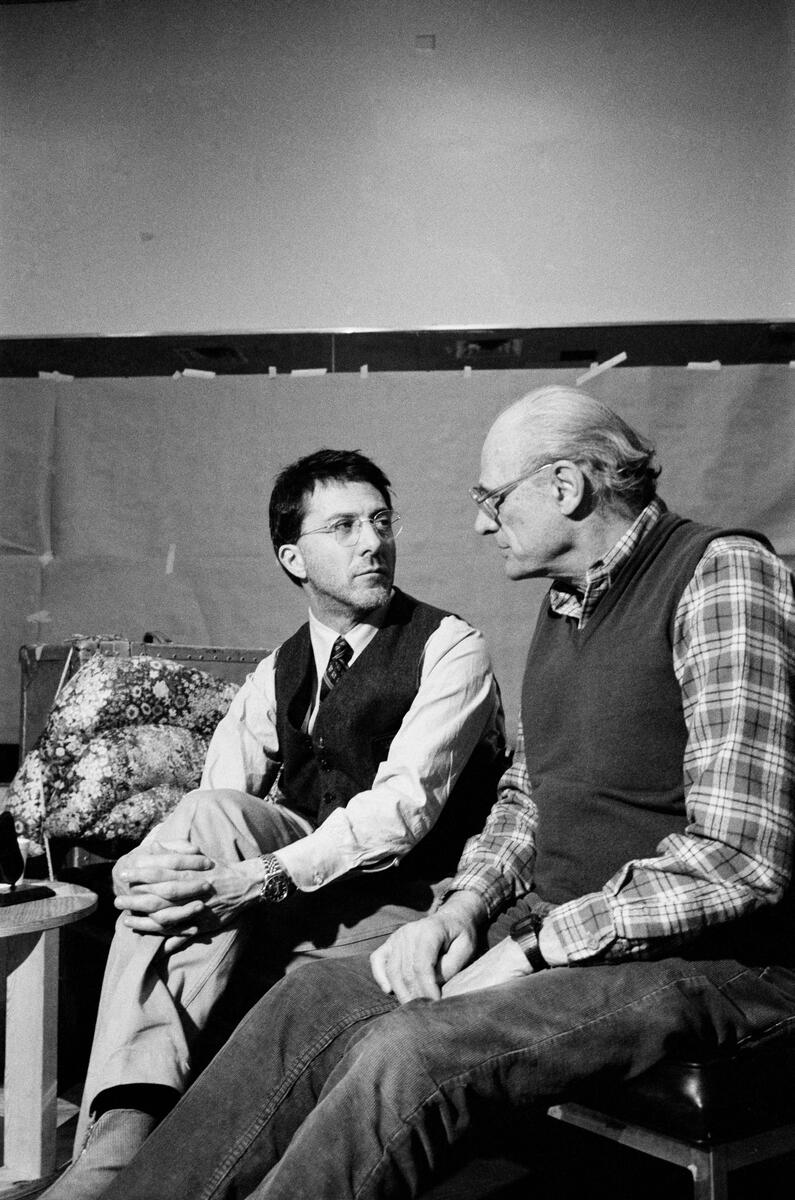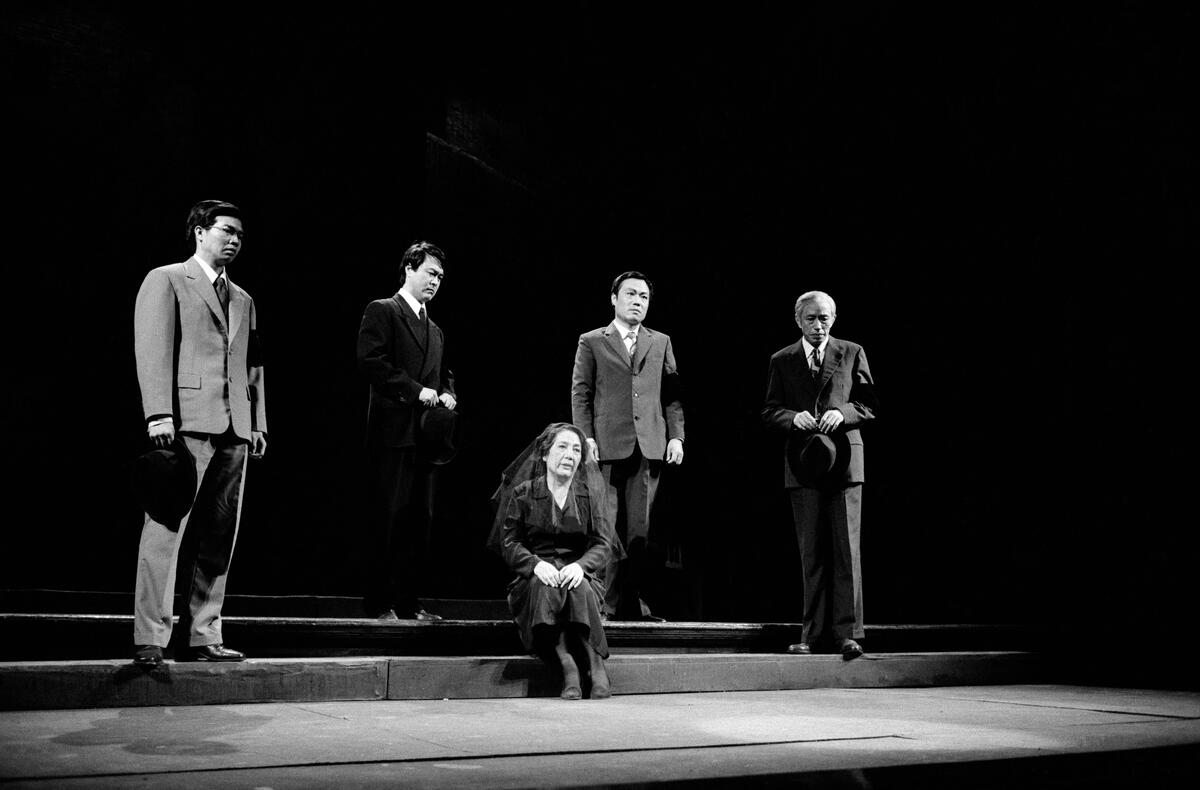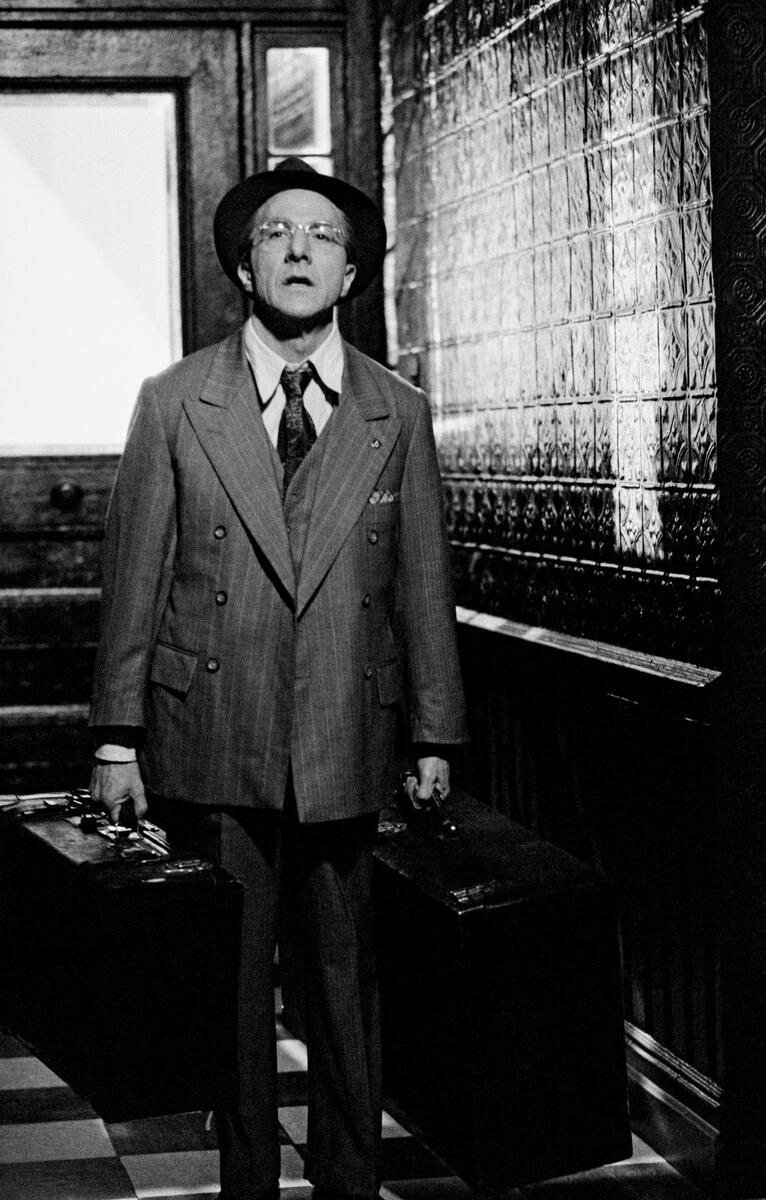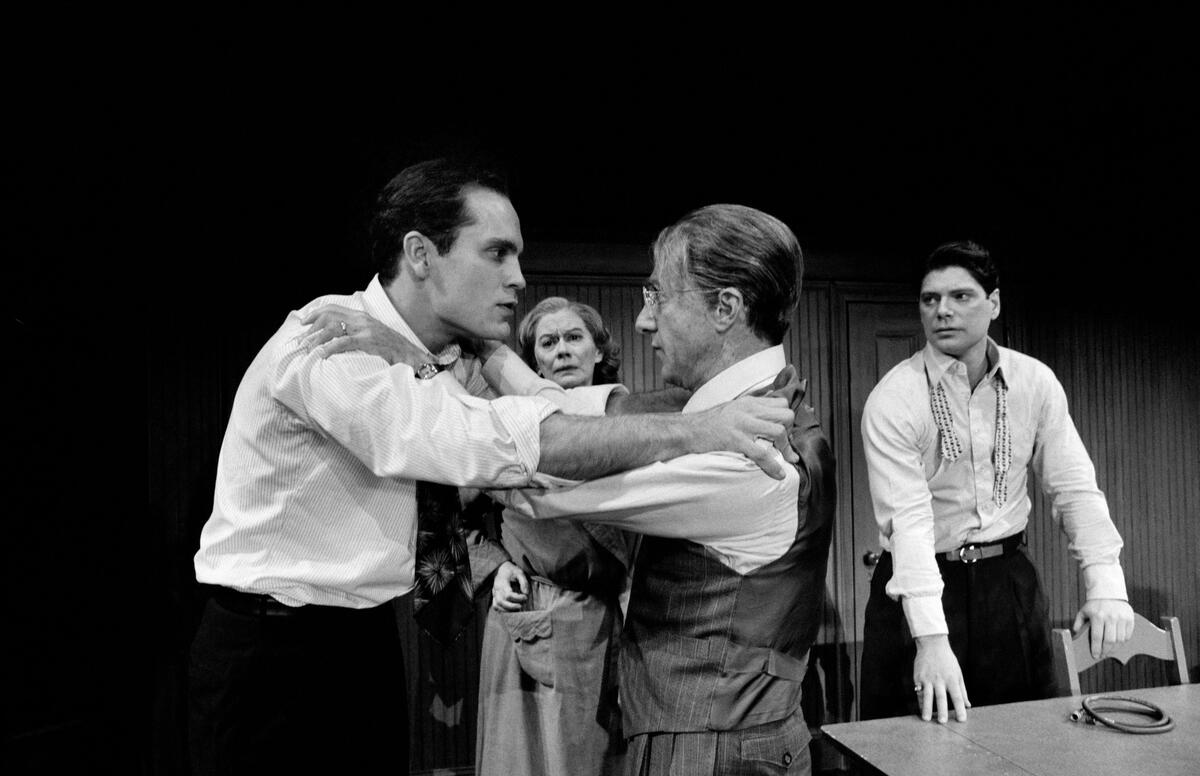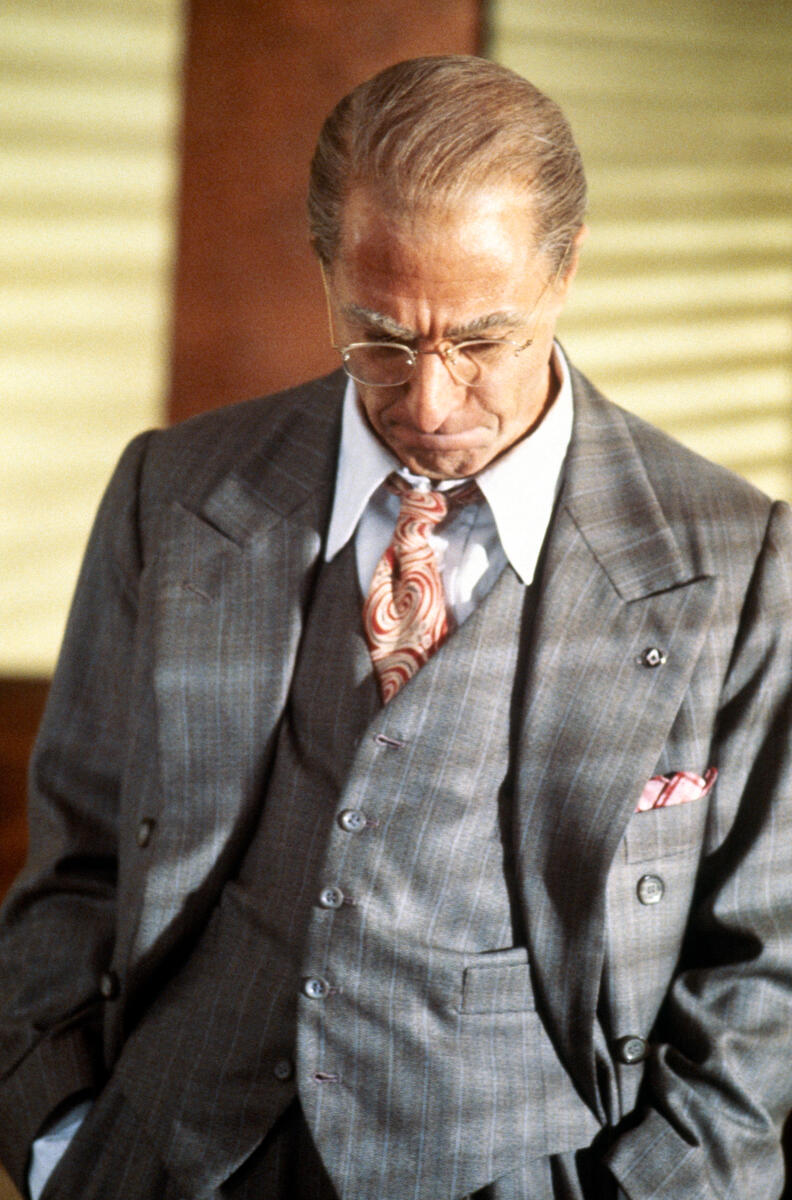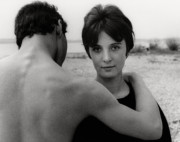Celebrating “Death of a Salesman” at 75
Revisit the life and legacy of Arthur Miller's classic through his own words and photographs by Inge Morath
When Arthur Miller’s Death of a Salesman premiered on February 10, 1949, the play was hailed as a masterpiece of American drama. Magnum celebrates the 75th anniversary of its debut with the following photo essay featuring selections from Miller’s extensive commentary on the play, accompanied by pictures taken by the renowned photographer, Inge Morath, who was Miller’s wife. With her sharp lens and sensitive eye for detail, Morath documented many productions of Salesman, including the CBS TV production in 1966, Miller’s direction of the play in Beijing, China in 1983, and the 1984 Broadway revival and subsequent CBS TV broadcast in 1985.
In Arthur Miller’s words:
“The play grew from simple images. From a little frame house on a street of little frame houses, which had once been loud with the noise of growing boys, and then was empty and silent and finally occupied by strangers. Strangers who could not know with what conquistadorial joy Willy and his boys had once re-shingled the roof. Now it was quiet in the house, and the wrong people in the beds.
“The play’s eye was to revolve from within Willy’s head, sweeping endlessly in all directions like a light on the sea, and nothing that formed in the distant mist was to be left uninvestigated.
“There are no flashbacks in this play but only a mobile concurrency of past and present, and this, again, because in his desperation to justify his life Willy Loman has destroyed the boundaries between now and then, just as anyone would do who, on picking up his telephone, discovered that this perfectly harmless act had somehow set off an explosion in his basement.”
— Introduction, Collected Plays of Arthur Miller
“Music begins Salesman, and not by accident; we are to hear Willy before we see him and before he speaks. He was there in the hollow of the flute, the wind, the air announcing his arrival and his doom.”
— Letter, April 13, 1999, in The Salesman Has A Birthday: Essays Celebrating the Fiftieth Anniversary of Arthur Miller’s Death of a Salesman
"Jo Mielziner’s set, in a word, was an emblem of Willy’s intense longing for the promises of the past, with which indeed the present state of his mind is always conflicting, and it was thus both a lyrical design and dramatic one."
- Arthur Miller, Timebends, A Life
“Writing a book was the last thought in my mind when I went to China in 1984 to direct a Chinese cast in Death of a Salesman at the Beijing People’s Art Theatre. There were too many uncertainties to allow for writing anything. Would I manage to communicate with Chinese actors, only one of whom understood English? Would the audience make any sense of the play, whose form, like the society it spoke of, was utterly strange to them? Indeed, one director of the theater declared on reading the play after rehearsals had begun that ‘it is impossible to act this thing.’ And in truth several of the actors would later confess that they could make nothing of it in the beginning. But it soon turned out that the moon is the moon and actors are actors, the same everywhere.”
— Arthur Miller, ‘Salesman’ in Beijing
“The Chinese reaction to my Beijing production of Salesman would confirm what had become more and more obvious over the decades in the play’s hundreds of productions throughout the world: Willy was representative everywhere, in every kind of system, of ourselves in this time.”
— Arthur Miller, Timebends, A Life
"There is no limit to the expansion of the audience’s imagination so long as the play’s internal logic is kept inviolate."
- “The Salesman Has a Birthday.” New York Times, 1950
“He is all mood, all feeling, a naked branch of an old tree swaying in the wind. Willy moves with the air and from one moment to the next, one feeling to the next, and in a sense believes everything at once…that he is loved, that he is contemptible; that he is lost, that he has conquered; that he afraid, that nothing frightens him and that everything does, and on and on and on. It may be that he has escaped the categories simply because he is human, and too self-absorbed to be embarrassed at being one. Whatever else you may say about him, he is unmistakably himself…even including the times he wishes he wasn’t.”
— Letter, April 13, 1999 in The Salesman Has A Birthday: Essays Celebrating the Fiftieth Anniversary of Arthur Miller’s Death of a Salesman
"I think the tragic feeling is evoked in us when we are in the presence of a character who is ready to lay down his life, if need be, to secure one thing — his sense of personal dignity."
- "Tragedy and the Common Man," New York Times, 1949
"I believe that the common man is as apt a subject for tragedy in its highest sense as kings were."
- "Tragedy and the Common Man," New York Times, 1949
“Death of a Salesman, really, is a love story between a man and his son, and in a crazy way between both of them and America.”
— Arthur Miller, ‘Salesman’ in Beijing
The Continued Relevance of a Great Play
To mark the first anniversary of the Broadway opening of the original production of Death of a Salesman, Arthur Miller wrote an essay entitled, “The Salesman Has a Birthday,” (New York Times, February 5, 1950) and reflected: “So what is there to feel on this anniversary? Hope, for I know now that people want to listen. A little fear that they want to listen so badly.”
Decades later in his autobiography Timebends (1987), he recalled opening night: “As sometimes happened later on during the run, there was no applause at the final curtain of the first performance. Strange things began to go on in the audience. With the curtain down, some people stood to put their coats on and then sat again, some, especially men, were bent forward covering their faces, and others were openly weeping. People crossed the theatre to stand quietly talking with one another. It seemed forever before someone remembered to applaud, and then there was no end to it.”
The critical reaction was equally overwhelming. Since that Broadway opening on February 10, 1949, Death of a Salesman has been recognized as a landmark of twentieth-century American drama. Of the premiere, Brooks Atkinson of the New York Times wrote, “Arthur Miller has written a superb drama. From every point of view Death of a Salesman […] has the flow and spontaneity of a suburban epic […] evokes a wraith-like tragedy.” Howard Barnes in the New York Herald Tribune wrote that the play has a “majesty, sweep, and shattering dramatic impact. Its lucidity, eloquence, and deep feeling make it far more than a good job of craftsmanship. It is a play to make history.”
The production ran for 742 performances. Within a year, Salesman was playing in every major city in the United States and within a few years began its incredible run of international productions that continues to this day. Brenda Murphy has noted that since its premiere, there is never a time that Salesman is not being performed somewhere in the world. In addition, the play is read and discussed in high schools, colleges and universities around the globe as part of a shared literary canon.
The play’s universal appeal lies in Willy Loman’s struggle to achieve the American Dream. The drama depicts the last day in the life of Loman who for thirty-six years as a traveling salesman has fought to achieve the success that the American Dream promises, and the play captures the dramatic moments when Willy confronts his failure. Alfred R. Ferguson maintains that the play dramatizes “the tragic life and death of the American Dream. Willy Loman, the salesman of the story, is the American Dream personified.”
So attention must be paid to Willy’s failure because we identify with his passion as a human being, and perhaps as a husband and a father to succeed for himself, his wife, and his sons, but we also recognize that his tragedy lies in that he may have pursued the dream in all the wrong ways. We are moved by the terrible thing that happens to him. However, we understand his death need not signify the death of our own dreams.
The significance of the seventy-fifth anniversary of the original production of Death of a Salesman cannot go unnoticed for it retains its relevance. As audiences over the world have witnessed since the play’s debut, Willy Loman can be played as a small man or a big man, of any race or ethnicity. Future audiences will be moved simply because they will be human beings who will still want “to listen badly.” They, too, will be awed by the terrible thing happening to the Loman family.
Miller’s reflection on the first anniversary will stand: “People want to listen.”
Bibliography: texts by Arthur Miller
- “Introduction.” In the Collected Plays of Arthur Miller. New York: Viking, 1957, 3-55.
- Timebends, A Life. New York: Grove, 1987.
- “Letter.” April 13, 1999. in “The Salesman Has A Birthday”: Essays Celebrating the Fiftieth Anniversary of Arthur Miller’s Death of a Salesman. Ed. Stephen Marino. University Press of America, 2000.
- ‘Salesman’ in Beijing, 1991. Second edition. Methuen Drama, 1991.
- “The Salesman Has a Birthday.” New York Times, February 5, 1950.
- “Tragedy and the Common Man” New York Times, February 27, 1949.
Text excerpts ©Arthur Miller, used by permission of The Wylie Agency LL
This feature is a collaboration among the Arthur Miller Society, Inge Morath Estate and Arthur Miller Trust.


